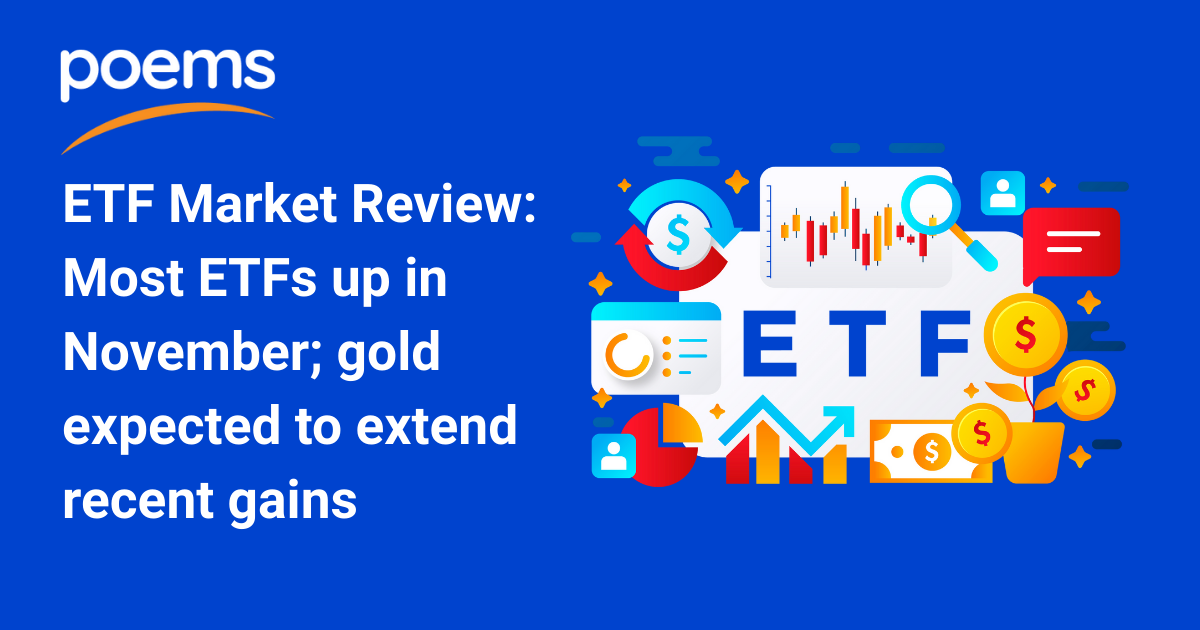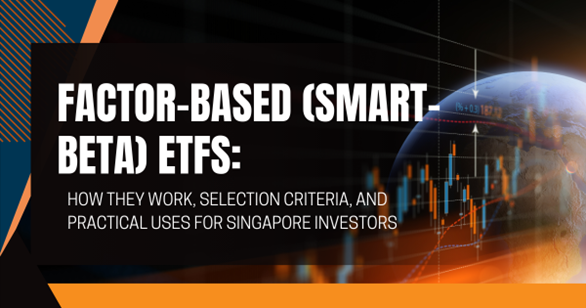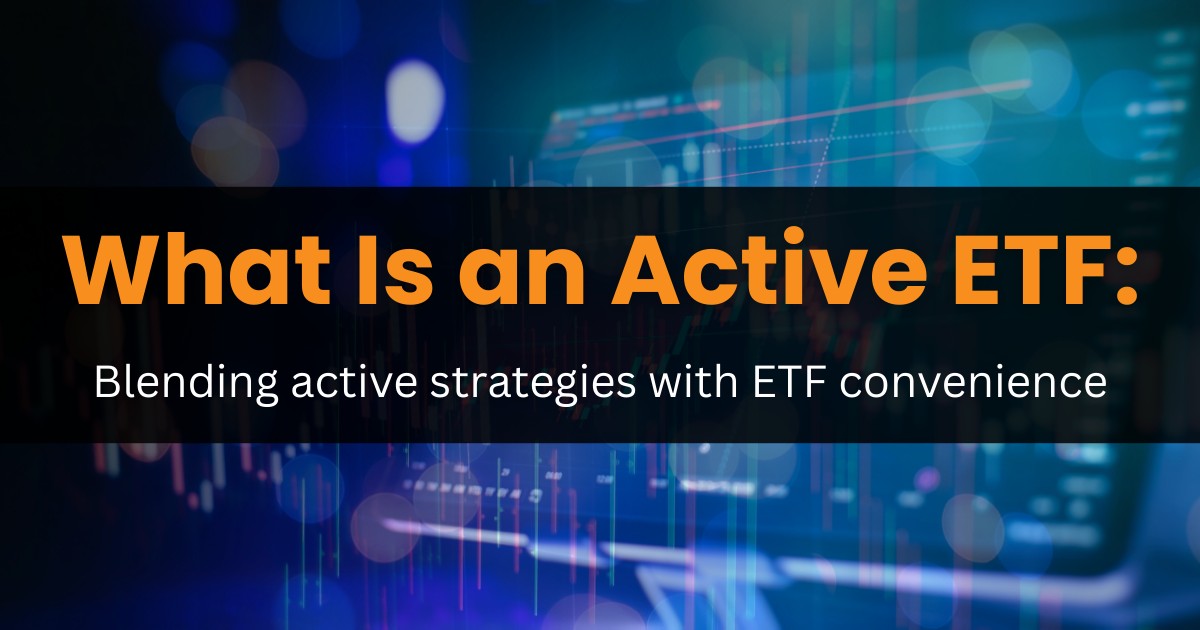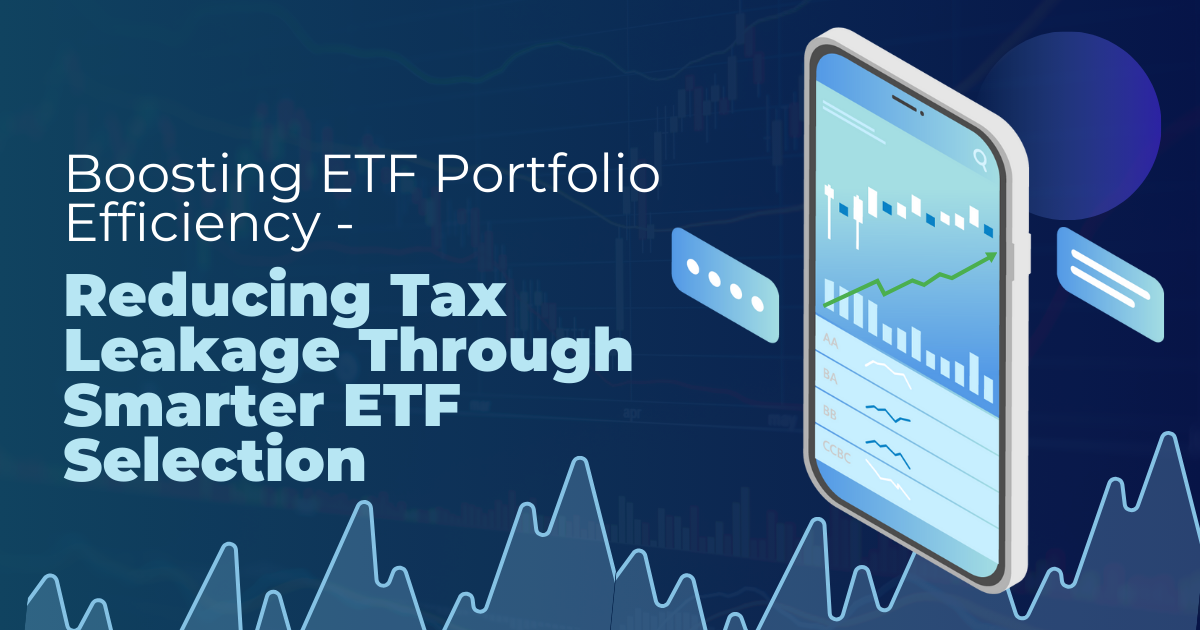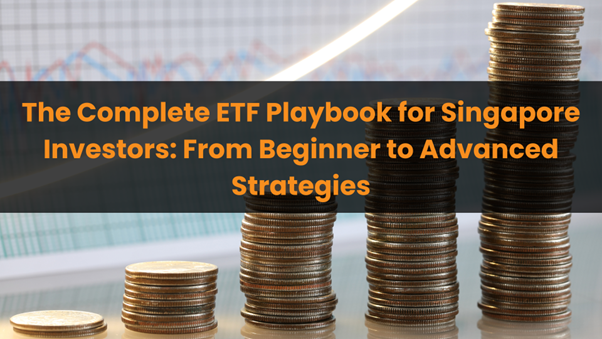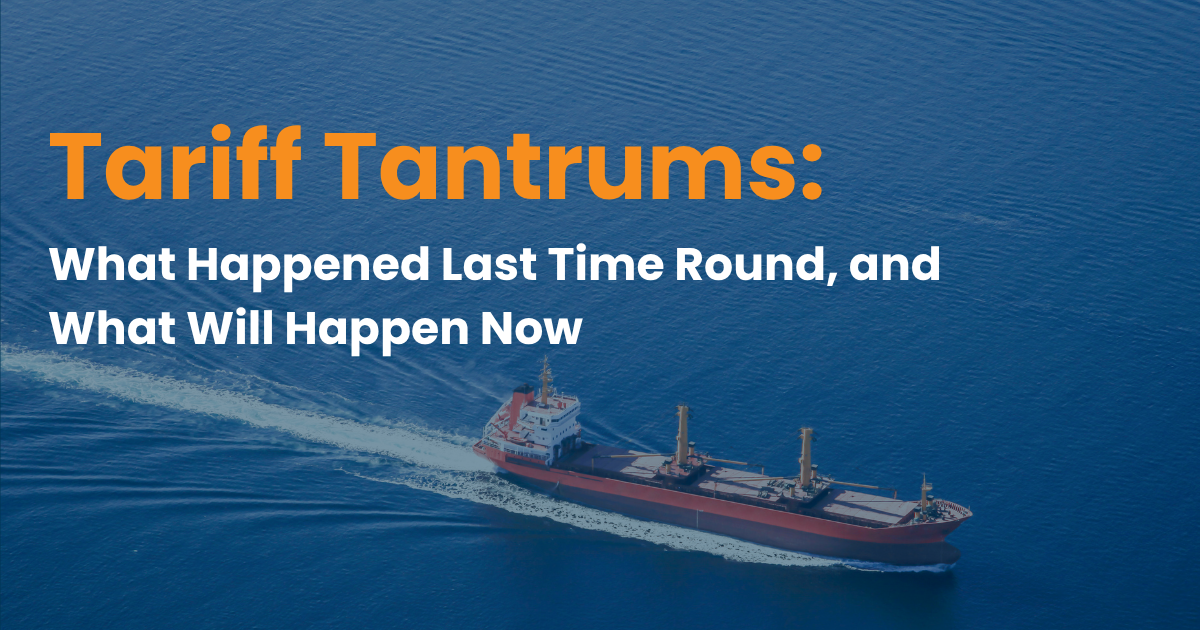Why Us?

Access to over 4,000 ETFs
Tap into global exchanges, including NYSE, SGX, HKEX, and over 26 markets. Filter suitable ETFs via the ETF Screener

Your Gateway to Market Knowledge and Expert Advice
Learn from industry experts by meeting ETF issuers and specialists at events, and explore insights in our Research and Market Journals

Invest Your Way, on Your Terms
Harness the power of dollar-cost averaging with SBP and recurring orders

Competitive Pricing
Enjoy competitive pricing with no platform fees and no minimum commission for SGX

Trusted Partner
Recognised as the top SGX-ST member for ETFs (Retail) from 2020 to 2023. Trust a platform with 79 awards since 2007
Access Global Exchanges at Competitive Rates

Choose the perfect account from our various account types for your needs. Access global exchanges at competitive rates. Enjoy ZERO platform fees across all markets and complimentary live prices for global markets. Grow your idle cash at SG3.379% p.a. and US$ 4.000% p.a.
Rates updated as of 26 Jun 2023
*Based on the average annualised return over the past rolling week.
Past performance is not necessarily indicative of future performance. [View disclaimer]
Tools

Explore Advanced Investment Tools
Discover new opportunities with Thematic Portfolios and comprehensive screeners, and refine your strategy and optimise performance
Articles
View All
Promotion
More about ETF
ETFs are open-ended investment funds listed and traded on a stock exchange. They aim to track, replicate or correspond to the performance of an underlying index or asset. ETFs provide access to a wide variety of markets and asset classes.
The performance/price of ETFs is ultimately dependent on the value of its underlying asset and the respective index that the ETF is tracking.
Unlike Unit Trusts which follow an active strategy of trying to outperform the market, ETFs adopt a passive indexing strategy which results in a lower expense ratio. Compared to Unit Trusts which are only required to release their holdings information to the public twice per year, ETFs’ holdings information are available through their prospectus to the public at any point in time.
Even though ETFs are traded on stock exchanges like shares, they give investors an exposure to a basket of securities instead of exposure to a single company.
| ETFs | Shares | Unit Trusts | |
|---|---|---|---|
| Diversification | Yes | No | Yes |
| Price Transparency | Yes | Yes | No |
| Intra-day Trading | Yes | Yes | No |
| Sales Charges | None* | None* | 3 – 5% |
| Management Fees | Less than 1% | None | 1 – 2% |
| Divdend | Yes | Yes | Yes |
| Traded through a broker | Yes | Yes | No |
There are a wide variety of ETFs available in the market to cater to investors’ needs and wants. For example, an investor with a portfolio of large cap stocks in the US market can purchase US mid and small cap ETF to complement his portfolio to gain more exposure.
In addition to diversifying their specific Asset Class, investors can also diversify into specific sectors according to the ETFs of their preference. Below are some examples of different types of ETFs:
- Commodity and commodity index
These ETFs are intended to provide exposure to only one type of commodity or a basket of closely related commodities. As such, they may not be as diversified as ETFs linked to a broad-based equity index.
- Bond index
ETFs can track a specific bond index. These ETFs provide exposure to the fixed income market.
- Equities
- Long stock index
Some ETFs track the movements of a stock index, such as the Straits Times Index (STI). This means that if the index increases in value by 2%, the ETF is intended to increase by 2%, less any fees.
- Inverse (or ‘short’) index
These ETFs track the movements of a short index. The short index moves inversely to its corresponding long index on a daily basis. So if the long stock index drops by 2%, the short index will increase by 2% less any fees. However, this relationship holds only on a day-to-day basis. The movement of a short ETF may not be equal to the simple inverse of the long index when measured over a period of more than one day. These ETFs are generally not intended for long term investments and are generally not suitable for retail investors who plan to hold them for longer than one day, particularly not in volatile markets.
- Leveraged ETF
Leveraged ETFs aim to track, replicate or correspond to a multiple of the performance of the benchmark index that they track. Currently, there are more than 100 different leveraged ETFs which track commodities, currencies and various stock indexes.
It is critical to understand the time period for which the leverage applies. Each fund explicitly states this time period in its prospectus. It is important to note that the risk of loss from trading leveraged ETF can be magnified.
Generally, leveraged ETFs are designed to generate the multipler results only on a daily basis. They are not designed for long term index tracking. The compounded performance of a leveraged ETF over a period of time may be significantly different from the index’s performance times the leveraged ETF’s stated multiple
- Bitcoin ETF
- A Bitcoin ETF is a financial instrument that provides investors with exposure to Bitcoin in the form of a stock that can be bought and sold on traditional stock exchanges. This type of ETF tracks the price of Bitcoin and mirrors its performance, allowing investors to invest in Bitcoin without the complexities of directly buying, storing, and managing the cryptocurrency. By purchasing shares in a Bitcoin ETF, investors can potentially gain exposure to the price movements of Bitcoin in a regulated and familiar trading environment.
The key risks associated with ETFs include the following. It is important to note that the list of risks is not exhaustive.
Similar to shares, investors face the risk of substantial loss to their initial investment if market conditions are not favourable.
Counterparty risk involved in ETFs with full replication and ETFs with representative sampling strategies
An ETF using a full replication strategy generally aims to invest in all constituent stocks/assets in the same weightings as its benchmark. ETFs adopting a representative sampling strategy will invest in some, but not all of the relevant constituent stocks/assets. For ETFs that invest directly in the underlying assets rather than through synthetic instruments issued by third parties, counterparty risk tends to be less of concern.
Synthetic replication strategies
ETFs using a synthetic replication strategy use swaps or other derivative instruments to gain exposure to a benchmark. Currently, synthetic replication ETFs can be further categorized into two forms:
Swap-based ETFs
Total return swaps allow ETF managers to replicate the benchmark performance of ETFs without purchasing the underlying assets. Swap-based ETFs are exposed to counterparty risk of the swap dealers and may suffer losses if such dealers default or fail to honour their contractual commitments.
Derivative embedded ETFs
ETF managers may use other derivative instruments e.g. access product to synthetically replicate the economic benefit of the relevant benchmark. The derivative instruments may be issued by one or multiple issuers. Derivative embedded ETFs are subject to the counterparty risk of the derivative instruments’ issuers and may suffer losses if such issuers default or fail to honour their contractual commitments.
Even when collateral is obtained by an ETF, it is subject to the collateral provider fulfilling its obligations. There is a further risk that when the right against the collateral is exercised, the market value of the collateral could be substantially less than the amount secured resulting in significant loss to the ETF.
When the ETF is priced in one currency (eg United States dollar) and is different from the functional currency of the investor (eg Singapore dollar), the investor is exposed to fluctuations in foreign exchange rates, which may increase or erode investment returns on the ETF.
Listing or trading on a stock exchange does not guarantee that a liquid market exists for an ETF. A higher liquidity risk is involved if an ETF uses financial derivative instruments, including structured notes and swaps, which are not actively traded in the secondary market and whose price transparency is not as easily accessible as securities. This may result in a bigger bid and offer spread. These financial derivative instruments are also susceptible to more price fluctuations and higher volatility. Hence, they can be more difficult and costly to unwind early especially when the instruments provide access to a restricted market where liquidity is limited in the first place.
An ETF may be traded at a discount or premium to its NAV. This price discrepancy is caused by supply and demand factors, and may occur during periods of high market volatility and uncertainty. This may be observed for ETFs tracking specific markets or sectors that are subject to direct investment restrictions.
Investors are exposed to market risk or volatility of the specific underlying which the ETF tracks. In unfavourable market conditions (eg market correction or economic crisis) where the general level of stock, bond, or commodity prices decline, the value of ETFs will decline accordingly.
There is a risk that the fund manager of the ETF may not be able to exactly replicate the performance of the underlying. This is known as the “tracking error”. Tracking error may occur due to the (i) methods of sampling are not 100% accurate, (ii) impact of fees and expenses, (iii) foreign exchange differences between the base currency or trading currency of an ETF and the currencies of the underlying investments, or (iv) corporate actions such as rights and bonus issues by the issuers of the ETF’s underlying securities.
Specifically for overseas ETF, investors may be dealing with foreign Governing Laws and Jurisdictions. Transactions on markets in other jurisdictions, including markets formally linked to a domestic market, may expose you to additional risks. Such markets may be subject to regulations which may offer different or diminished investor protection. Before you trade, you should enquire about any rules relevant to your particular transactions. Your local regulatory authority will be unable to compel the enforcement of the rules of regulatory authorities or markets in other jurisdictions where your transactions have been effected. You should ask the firm with which you conduct your transactions for details about the type of redress available in both your home jurisdiction and other relevant jurisdictions before you start to trade.
Inverse ETF fund managers may, at times, be unable to fully carry out their short-selling strategy as a result of difficulties in the derivatives markets, regulatory restrictions, or their inability to locate and borrow shares or for other reasons. This could cause the market price of the ETF to vary from its index target and NAV.
For example, if fund managers are unable to carry out their short-selling strategy they may not be able to offer shares that are sufficient to satisfy market demand. This could cause the ETF shares to trade at a premium to (or higher than) the fund’s NAV.
Many leveraged ETFs (of both the long and the short varieties) rely on the use of futures, swaps and other derivative securities, along with other securities or commodities, to achieve their target results. Some of these derivatives, such as swaps, are unlisted securities that depend on the swap issuer’s ability to pay. Therefore, the leveraged ETFs that depend on such swaps may not be able to achieve their stated result if a swap counterparty should default.
Leveraged and inverse ETFs may be less tax efficient than other ETFs. It is possible for investors to have a tax liability, even in a year in which the leveraged or inverse ETF had a negative overall return. This outcome can result from the fund managers “rebalancing” the investments each day with derivatives to maintain the ETF’s multiple. Such rebalancing can produce realized taxable gains with no offsetting losses. As with any potential investment, an investor should consult with his or her tax advisor and carefully read the prospectus to understand the tax consequences of leveraged or inverse ETFs.
Market Makers, Financial Institutions, Self-dealing brokers and etc who meet certain criteria will enter into a participant agreement with the ETF providers/sponsors to become authorized participants (APs) of the ETF.
Authorized Participants will assemble underlying securities/assets in their appropriate weightage to make up a creation unit and then delivering the basket of securities to the ETF providers. In return, APs will receive ETF shares which are then traded in the exchange market to retail investors. For the redemption process, APs will carry out the process in reverse.
Retail investors do not directly own the underlying assets of the ETFs. Instead, they own the underlying assets indirectly.





